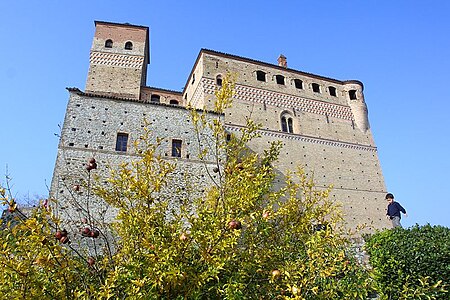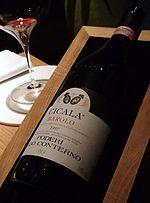Serralunga d'Alba
Castles in ItalyCities and towns in PiedmontMunicipalities of the Province of CuneoProvince of Cuneo geography stubs

Serralunga d'Alba is a comune (municipality) in the Province of Cuneo in the Italian region Piedmont, located about 60 kilometres (37 mi) southeast of Turin and about 45 kilometres (28 mi) northeast of Cuneo. Serralunga d'Alba borders the following municipalities: Alba, Castiglione Falletto, Diano d'Alba, Monforte d'Alba, Montelupo Albese, Roddino, and Sinio.
Excerpt from the Wikipedia article Serralunga d'Alba (License: CC BY-SA 3.0, Authors, Images).Serralunga d'Alba
Via Roma,
Geographical coordinates (GPS) Address Nearby Places Show on map
Geographical coordinates (GPS)
| Latitude | Longitude |
|---|---|
| N 44.610833333333 ° | E 8 ° |
Address
Via Roma
12065
Piedmont, Italy
Open on Google Maps








